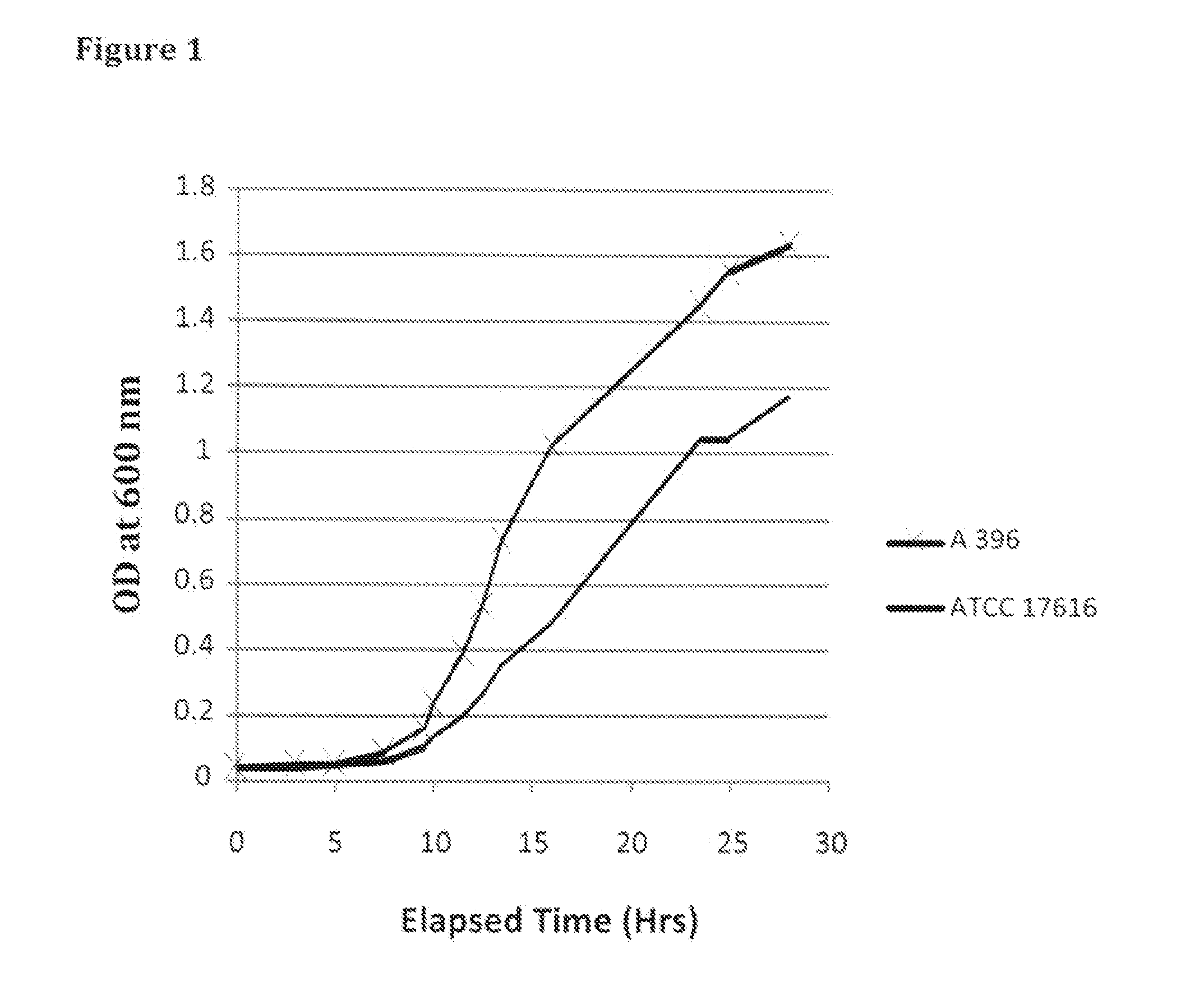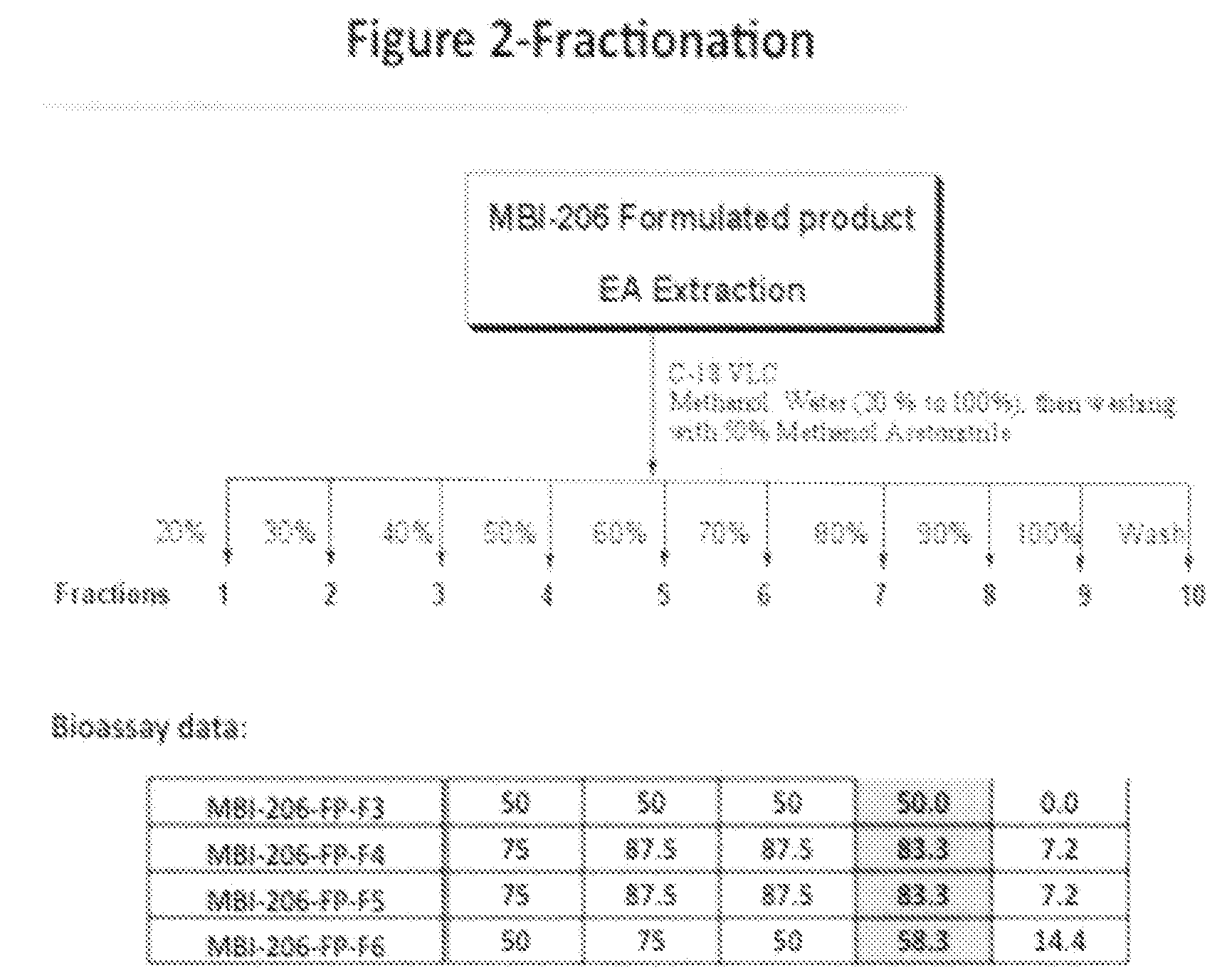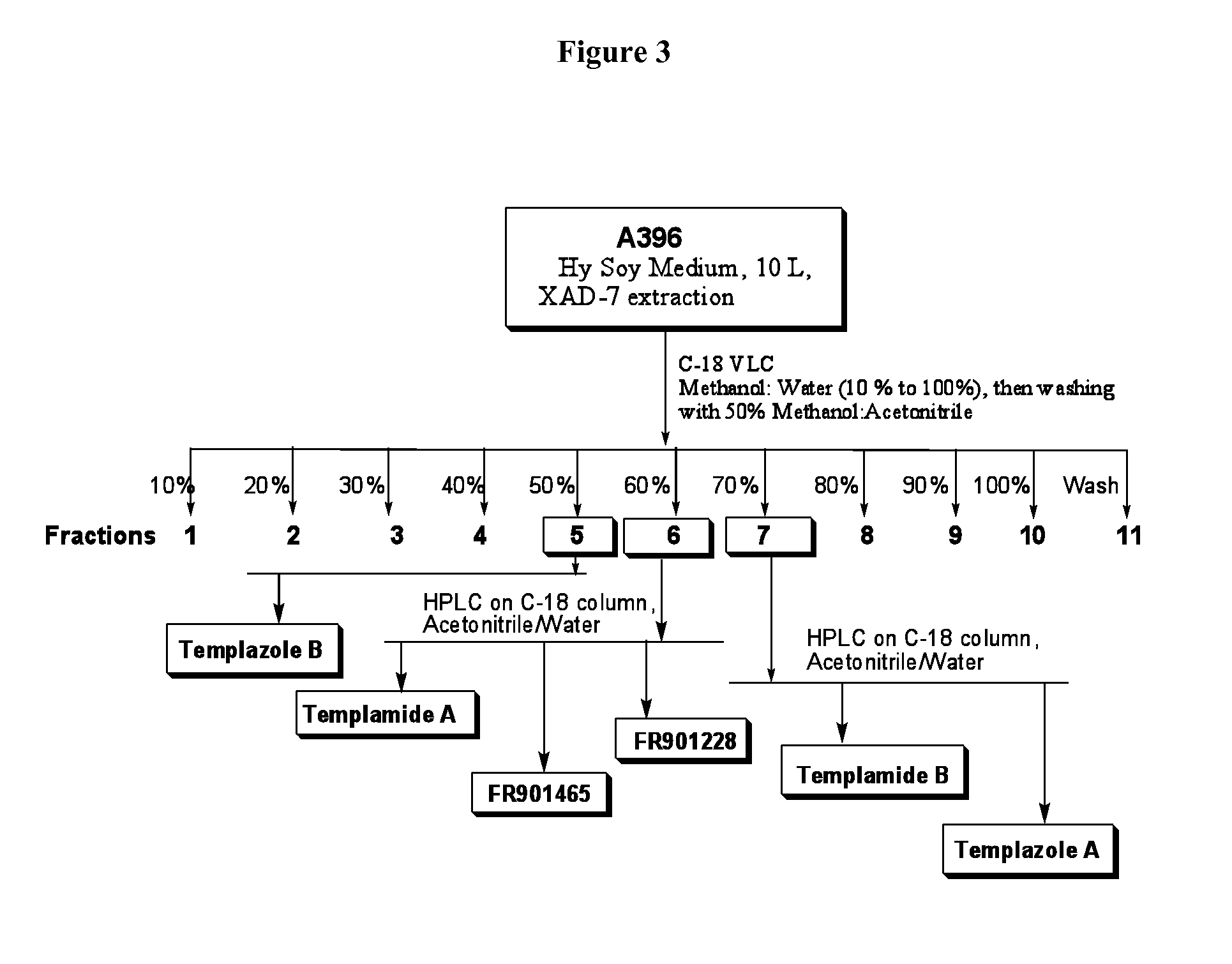Isolated bacterial strain of the genus burkholderia and pesticidal metabolites therefrom- formulations and uses
a bacterial strain and genus technology, applied in the field of isolated bacterial strains, can solve the problems of algae growth in a small amount of water retained in the container, serious problems in agriculture, clogging of filters in water filtration devices, etc., and achieve the effect of modulating proliferation and/or growth
- Summary
- Abstract
- Description
- Claims
- Application Information
AI Technical Summary
Benefits of technology
Problems solved by technology
Method used
Image
Examples
example 1
1. Example 1
Isolation and Identification of the Microbe
[0221]1.1 Isolation of the Microorganism
[0222]The microbe is isolated using established techniques know to the art from a soil sample collected under an evergreen tree at the Rinnoji Temple, Nikko, Japan. The isolation is done using potato dextrose agar (PDA) using a procedure described in detail by Lorch et al., 1995. In this procedure, the soil sample is first diluted in sterile water, after which it is plated in a solid agar medium such as potato dextrose agar (PDA). The plates are grown at 25° C. for five days, after which individual microbial colonies are isolated into separate PDA plates. The isolated bacterium is gram negative, and it forms round, opaque cream-colored colonies that change to pink and pinkish-brown in color and mucoid or slimy over time.
[0223]1.2. Identification on the Microorganism
[0224]The microbe is identified based on gene sequencing using universal bacterial primers to amplify the 16S rRNA region. The...
example 2
2. Example 2
Burkholderia Formulation and Isolation of Fractions from Formulated Product
[0247]The following procedure is used for the purification of compounds extracted from a formulated product of MBI-206 containing a whole cell broth of a culture of Burkholderia sp.:
[0248]The culture broth derived from the 10-L fermentation Burkholderia (A396) in Hy soy growth medium and formulated using methyl 0.1% and propyl paraben, 0.1% hexanol 0.67% and Glycosperse 0-20, 0.67% is extracted with Amberlite XAD-7 resin (Asolkar et al., “Weakly cytotoxic polyketides from a marine-derived Actinomycete of the genus Streptomyces strain CNQ-085.” J. Nat. Prod. 69:1756-1759. 2006) by shaking the cell suspension with resin at 225 rpm for two hours at room temperature. The resin and cell mass are collected by filtration through cheesecloth and washed with DI water to remove salts. The resin, cell mass, and cheesecloth are then soaked for 2 h in acetone after which the acetone is filtered and dried under...
example 3
3. Example 3
Isolation of Templazole A and B
Methods and Materials
[0283]The following procedure is used for the purification of Templazole A and B extracted from cell culture of Burkholderia sp (see FIG. 3):
[0284]The culture broth derived from the 10-L fermentation Burkholderia (A396) in Hy soy growth medium is extracted with Amberlite XAD-7 resin (Asolkar et al., 2006) by shaking the cell suspension with resin at 225 rpm for two hours at room temperature. The resin and cell mass are collected by filtration through cheesecloth and washed with DI water to remove salts.
[0285]The resin, cell mass, and cheesecloth are then soaked for 2 h in acetone after which the acetone is filtered and dried under vacuum using rotary evaporator to give the crude extract. The crude extract is then fractionated by using reversed-phase C18 vacuum liquid chromatography (H2O / CH3OH; gradient 90:10 to 0:100%) to give 11 fractions. These fractions are then concentrated to dryness using rotary evaporator and the...
PUM
| Property | Measurement | Unit |
|---|---|---|
| retention time | aaaaa | aaaaa |
| flow rate | aaaaa | aaaaa |
| retention time | aaaaa | aaaaa |
Abstract
Description
Claims
Application Information
 Login to View More
Login to View More - R&D
- Intellectual Property
- Life Sciences
- Materials
- Tech Scout
- Unparalleled Data Quality
- Higher Quality Content
- 60% Fewer Hallucinations
Browse by: Latest US Patents, China's latest patents, Technical Efficacy Thesaurus, Application Domain, Technology Topic, Popular Technical Reports.
© 2025 PatSnap. All rights reserved.Legal|Privacy policy|Modern Slavery Act Transparency Statement|Sitemap|About US| Contact US: help@patsnap.com



